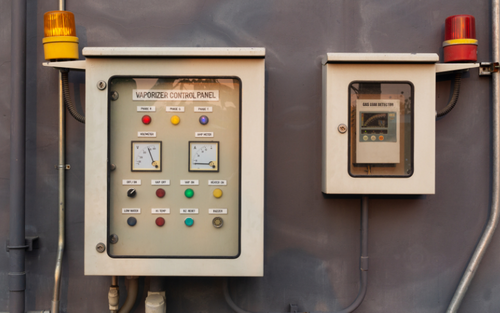Where Should Fixed Gas Monitors Be Mounted?
Gas monitors are designed to detect harmful substances that can affect air quality and put workers at risk. But the monitor needs access to the air in question to do its job. Choosing where to install fixed gas monitors depends on a number of factors, including the work environment, who’s entering the space, and the target gas. Use this guide to find the right place for your fixed 4-gas monitor, so you can stay safe in any situation.
Breathing Zone
When monitoring the space for oxygen to maintain breathing levels, it’s best to install the portable monitor in what’s known as the breathing zone. This is where your workers will draw in oxygen, so the monitor should be at a similar height and angle. Assuming your workers are standing upright, the breathing zone is usually around 4 to 6 feet off the floor.
The air passing over the monitor should be representative of the air your employees are breathing in. If your team is working close to the ground or kneeling while working, adjust the height of the gas monitor accordingly.
Consider the Density of the Gas
Every gas comes with its own density rating relative to air. Heavier gases, such as propane and gasoline, tend to sink to the floor, while lighter gases, such as hydrogen and natural gas, tend to rise up towards the ceiling. Other gases tend to hover in the breathing zone, or the middle of the room, including oxygen and carbon monoxide.
Install your gas monitor based on the density of the target gas. Put it near the floor when looking for high-density gases or a few inches from the ceiling when targeting low-density gases.
When using a 4-gas monitor or targeting more than one gas at the same time, focus on the gas that’s most likely to enter the space.
Target High-Traffic Areas and Possible Leaks
It’s also best to consider where your employees spend the bulk of their time. Do not leave crawl spaces, corners, and crevices un-monitored if workers will occupy the space. Keep your monitors close to the worksite or zone.
The gas monitor should always have access to air that represents the bulk of the space. Stay away from ventilation ducts, windows, and openings that can distort your gas readings. The sensor on the monitor should have unobstructed access to the surrounding space.
When choosing a location for your monitor, look for possible problem areas, such as those with poor ductwork or ventilation and areas where leaks have been known to occur.
You should always conduct a thorough safety review of the worksite before installing a fixed gas monitor. Consider the nature of the job and where your employees tend to hang out. The monitor should be easy to install, so you can always move it if you need to change location.
If you’re not sure where to install your gas monitors or would like advice on how to select the right gas monitor for your company, contact a work safety professional before sending workers into the space. Contact the experts at PK Safety for more information.
Recent Posts
-
Customizing Gas Detectors: Tailoring Solutions to Fit Your Unique Requirements
In today’s diverse industrial landscape, a one-size-fits-all approach to safety simply doesn’t cu …Jul 3rd 2024 -
10 Ways to Prevent Wildfires
You can prevent wildfires by extinguishing flames before you leave the worksite. Avoid practicing …Jul 1st 2024 -
ANSI/ISEA 138 Safety Gloves: Ensuring Hand Protection
The human hand is an anatomical masterpiece and arguably the greatest tool attached to our bodies …Jun 25th 2024





